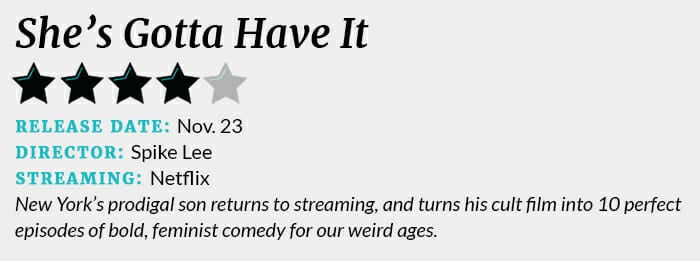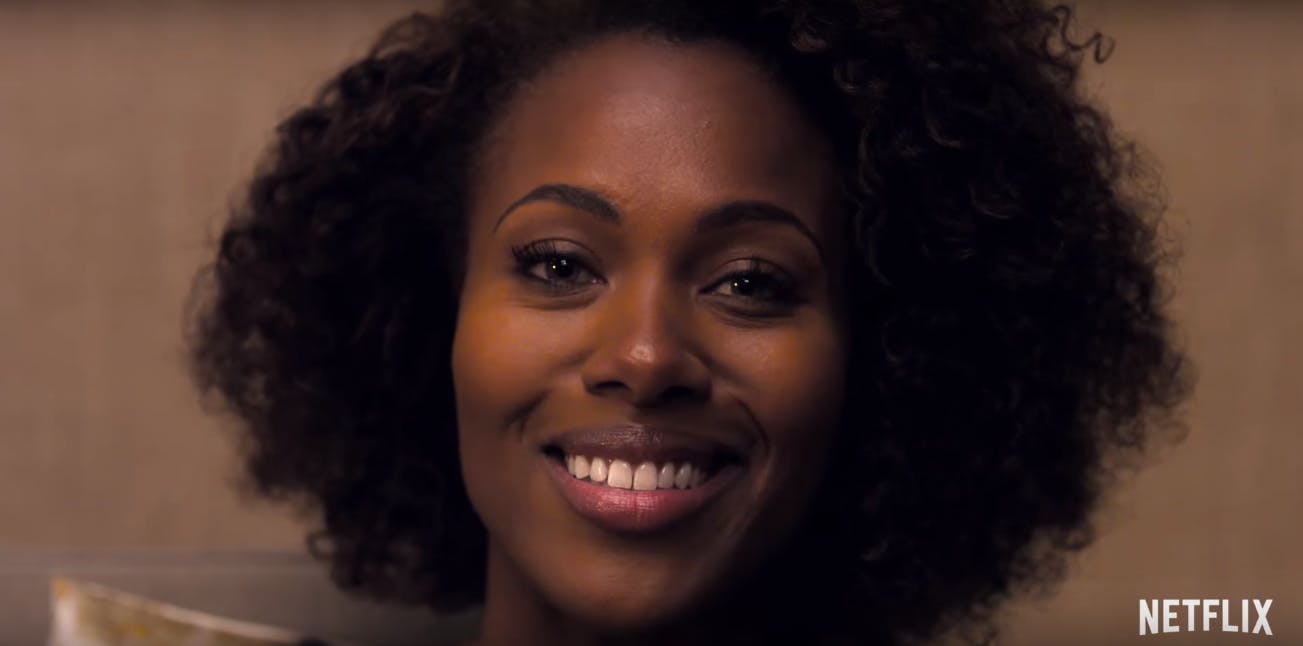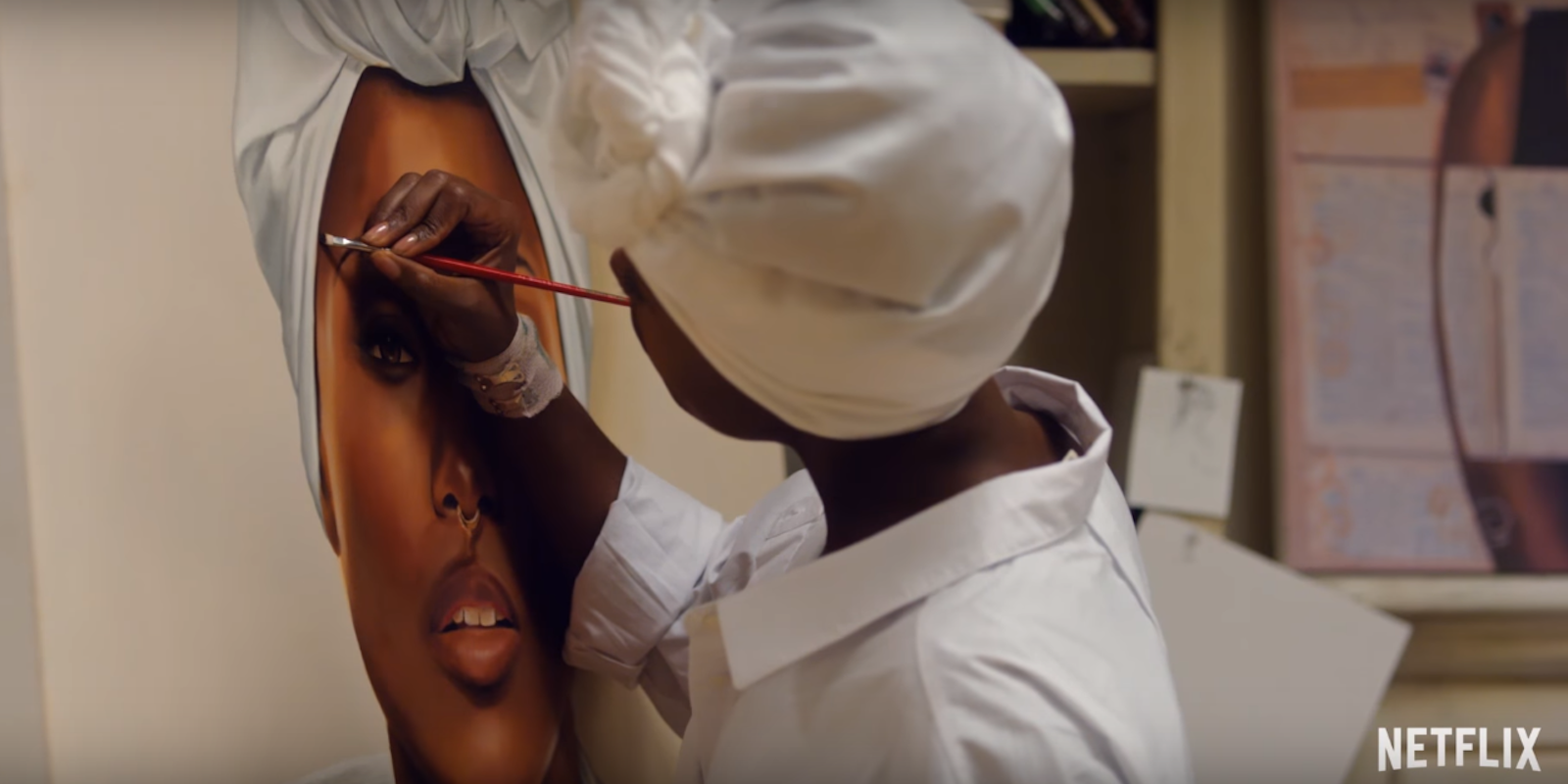It seems inevitable now that Spike Lee would end up on TV.
As the opportunities for independent film got narrower over the past decade, creating a cinematic landscape which so often feels like it has little room for anything other than superhero movies, even celebrated directors were left out. Lee hit a rough patch during this period, at one point resorting to Kickstarter to secure financing for his next film. Then the world of streaming came calling.
First, there was Chiraq, the movie he did with Amazon and his most interesting work in years. Now he’s partnered with Netflix on an adaptation of his debut film, She’s Gotta Have It. With everyone from Brit Marling to Woody Allen hopping on the streaming bandwagon, it’s safe to say that companies like Netflix and Amazon Prime are giving both new and established filmmakers the chance to make movies and TV shows they simply wouldn’t be allowed to make anywhere else. But are they any good?
In Lee’s case, the answer is an emphatic yes. If Chiraq was an intriguing return to form, She’s Gotta Have It is both a culmination of everything he’s been working toward his whole career and a bold new impression on the television world.
Meet (or reintroduce yourself to) Nola Darling. In her own words, she’s a “sex-positive, polyamorous, pansexual.” In other words, she’s the ideal television protagonist for right now. As played by DeWanda Wise, Nola is deeply flawed, given to impulsivity and selfishness, but she’s also confident and unapologetic about what she wants. She knows she’s not perfect, but refuses to compromise, both as an artist and as a sexual being. For her, these two things are in many ways intertwined. But Nola is about more than just sex. She’s legitimately committed to her career as a painter, she’s an active member of her Brooklyn community, and she maintains strong relationships with her friends and parents. The men in her life are just Lee’s way of introducing us to her outlook and her world. Wise gives a commanding performance in the role, creating one of the better on-screen protagonists of the year.

So, about those men in her life. Shortly after becoming acquainted with Nola, we also become acquainted with her three lovers. First, there’s Jamie Overstreet (Lyriq Bent), a successful and slightly older businessman who’s looking for a commitment that Nola just can’t give him. Then there’s Mars Blackmon (Hamilton’s Anthony Ramos, in the role, originated by Lee himself), a goofball who works at a bike shop and is as committed to his sneakers as anything else in his life. Finally, there’s Greer Childs (Cleo Anthony), who’s, well, basically the worst. A fashion photographer obsessed with his own image, he’s convinced he’s “the best thing that ever happened to Nola Darling.”
All of these supporting players are good and backed up by strong writing. As Jamie, Bent has several nice moments throughout the season where he struggles to reconcile his current privilege with his upbringing as a poor Black kid in the projects. As stated above, Greer is terrible, but Anthony does his best to bring unexpected shades of vulnerability to the character (though mostly, he remains a vain jerk).
The dude who’s by far the most likable and also pops the most on-screen is Ramos’ Mars. Yes, he’s immature and silly, but he also genuinely cares about Nola and does his best to help her out when she’s in a bind. Playing John Laurens/Philip Hamilton in Hamilton, Ramos occasionally got overshadowed by the many heavyweights he shared the stage with. That doesn’t happen here.
While the men all have good and bad qualities, they are all intermittently toxic. One episode revolves around Nola’s decision to buy a little black dress and the ways in which each man in her life uses it as a symbol to project their own insecurities and hang-ups onto her. Jamie complains that it’s too sexy for a nice dinner, and insists she must want attention if she’s wearing it. Mars blames it when he gets into a fight, and suggests that men can’t control themselves when they see a woman dressed like that. Greer loves the dress and quickly becomes obsessed with photographing Nola in it, but his possessive reaction ends up making Nola feel like a prize to be captured. None of them get that she bought the dress for her because she felt good in it.
She’s Gotta Have It is the kind of self-aware show that’s obsessed with pop culture. Nola is a self-proclaimed cinephile, constantly making references to movies and even occasionally incorporates them into her art. The series’ excellent soundtrack spans the gamut from Sade to Sinatra, and with every selection comes a picture of the album cover, thrown on-screen like a title card to let you know what you’re hearing.
But of all the series’ references, Lee pays the most homage to himself. The characters talk into the camera, and the soundtrack is backed up by a melancholic piano and jazz score reminiscent of his other New York stories. The way New York itself is used is also essential Lee, with Nola’s Fort Greene neighborhood becoming, as cliched as it sounds, its own character. Familiar names and places pop up too, such as Elvis Nolasco as a character called Da Mayor, or Lee’s own sister, Joi, who plays Nola’s mother. Lee directed all 10 episodes of She’s Gotta Have It, and it’s a Spike Lee joint through and through, as gorgeous and aggressive as anything he’s ever done. That’s also why it’s both so surprising and refreshing that the show feels tailor-made for 2017.

The series comes with Lee’s limitations too. Though there were many talented women in the writers’ room, Lee occasionally falters in his depiction of femininity, the same way he was criticized for with 2015’s Chi-Raq (and when the original She’s Gotta Have It was released in 1986.) One episode focuses largely on a character’s decision to get silicone injections to modify her butt. It’s heartbreaking in its specificity and in how it shows the way women’s bodies and Black women’s bodies, in particular, are made into a commodity. However, when the show decides to bring up Nicki Minaj and Amber Rose and the manner in which some women display themselves on Instagram, it starts to feel more than a bit patronizing.
When Nola is attacked on the street at night in the first episode, Lee sets the shot up with a shaky camera, instantly telegraphing that something bad is about to happen. Although she gets away from her assailant, she doesn’t leave the altercation unscarred, especially mentally. The show certainly isn’t wrong for attempting this storyline, but it is important to consider depiction when tackling such sensitive subjects.
The way She’s Gotta Have It goes after street harassment is very effective though, with Nola deciding early on that she’s going to wage war on this practice through her art. Nola’s relationships with her friends also feel real and grounded, and many of the show’s best scenes are conversations between her and her former roommate, Clorinda (a gloriously uptight Margot Bingham). When Nola decides to let Opal (Ilfenesh Hadera), a mature and successful horticulturist back into her “loving bed,” the series returns to the dicey territory. Fortunately, Lee escapes most of the sensational cliches that straight men often fall into when depicting lesbian relationships.
She’s Gotta Have It isn’t perfect, but damned if it isn’t unique, beautiful, and perfectly of the moment. Not only do I highly recommend it, I put it alongside the best shows of the year. It’s a true treat for this Thanksgiving weekend, delicious but also substantial.
And that’s the truth, Ruth.
https://www.youtube.com/watch?v=whvPjWm7ZE0
Still not sure what to watch on Netflix? Here are our guides for the absolute best movies on Netflix, must-see Netflix original series and movies, and the comedy specials guaranteed to make you laugh.


